Tags
BBC Spring Watch, black slugs, blackcap, bluebells, Common Vetch, crabapple, Minsmere, oak, oak moss, ponds, red campion, RSPB, Suffolk, woods
Elinor took her Art exam over two days at the beginning of May and on the Friday of that week she and I decided we’d go to the RSPB (Royal Society for the Protection of Birds) reserve at Minsmere for a relaxing walk. Richard was away in Manchester visiting his mother and brother and helping his brother clear his Mum’s house before putting it on the market.
We go to Minsmere very often and know all the walks. Elinor decided she wanted to walk through the woods instead of going to the shore. I was hoping to hear a Cuckoo and a Nightingale. We had a drink and a cake in the café before we set off.

The first thing we saw was this and I have no idea what it is. Is it a canker, a fungus or is it a nest of some sort? It is on a Birch tree.
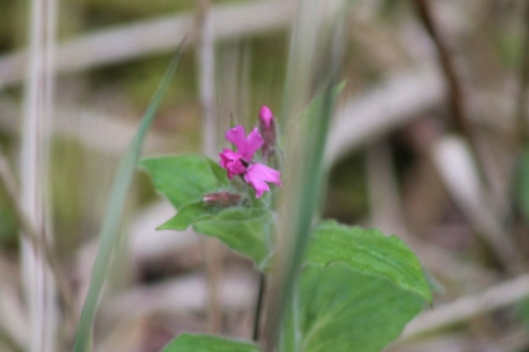
Red Campion (Silene dioica). The wind was blowing quite hard and I found it difficult to get anything in focus.
The weather, which had been quite pleasant in the morning, quickly deteriorated once we began our walk. It got quite cold and then a drizzly rain started as you can see by the raindrops on the pond above. Any hopes of hearing a Cuckoo or a Nightingale evaporated away.
There are Adders (Vipera berus) living on the reserve and we had been hoping to see them. We were told by another visitor that they were sleeping out in the open but unfortunately, by the time we arrived at the area where they are to be found, the rain had started and very sensibly they had gone under cover. The area is fenced off for their and our protection. They are Britain’s only venomous snake.
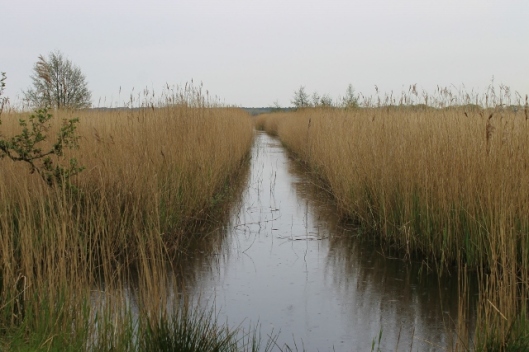
Reeds and water. We could hear Bitterns (Botaurus stellaris) booming in the reeds but we didn’t see any water fowl at all.
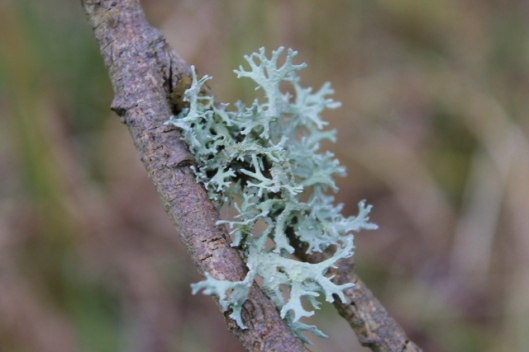
It is very attractive with its flat, curled branches. It isn’t moss at all but is in fact a lichenised fungus.
Air quality in the East of England isn’t as good as in the West of the country because the prevailing wind blows across the country, including London, before it gets to us. We are pleased when we find any kind of lichen as they are often indicators of clean air.

This is the building that was constructed last year for the BBC Spring Watch team. This is as near as us members of the hoi polloi can get to it. The BBC are currently filming at Minsmere though they weren’t when Elinor and I visited.
The next six photographs are of a male Blackcap (Sylvia atricapilla) that I found singing next to the path. The photos are not cropped. This warbler didn’t appear to be at all nervous and at each pause in his song he seemed to look at me to judge my reaction! He filled his throat with air and used it like the bag on a bag-pipe to sing.
I was very pleased to get these pictures.
Thank-you for visiting!


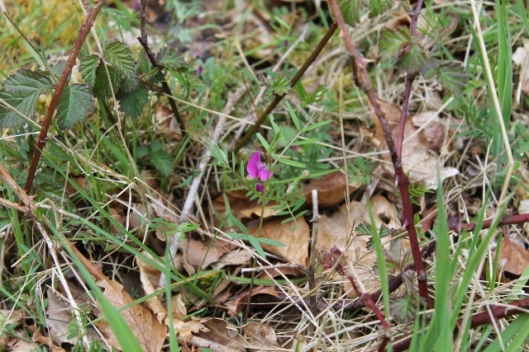
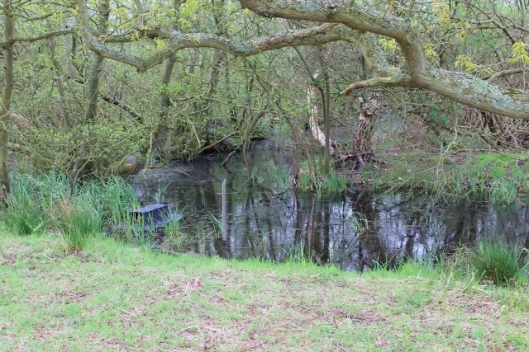
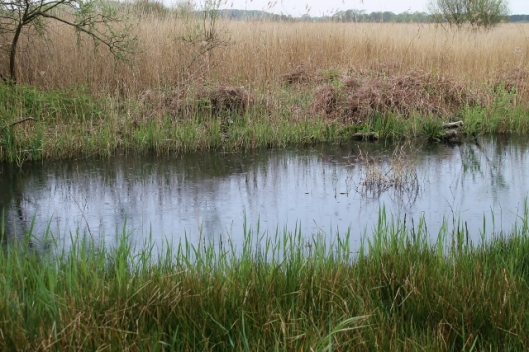



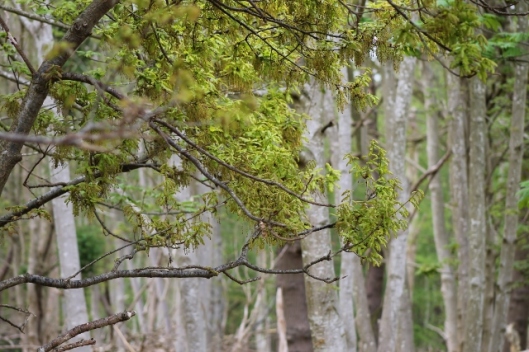
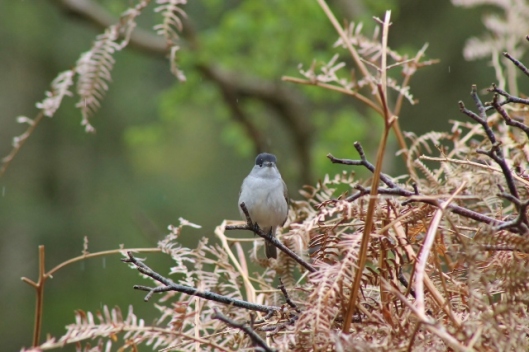
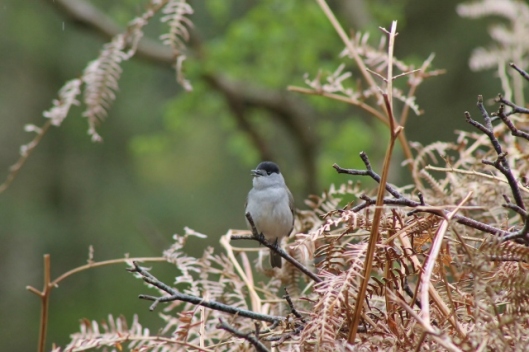


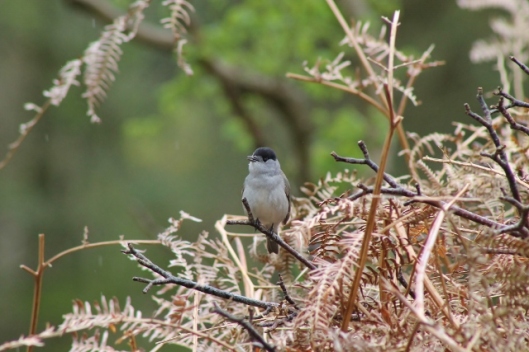
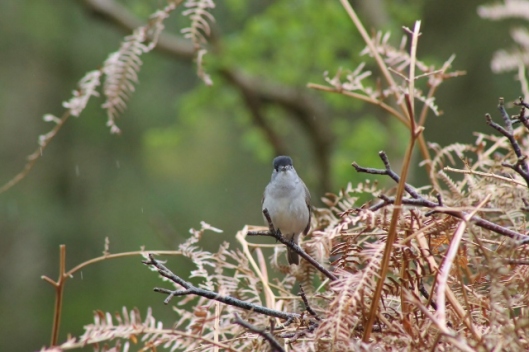
I really enjoyed your walk through Minsmere Clare, I felt as if I was walking with you. The warbler looks full of himself, lovely that he was singing to you!
LikeLiked by 1 person
I was so pleased to see and hear him sing. It is a song I will now have no trouble recognising again. I think the birds and animals at the reserve have learnt that people there are no threat to them and are that bit bolder.
LikeLiked by 2 people
Your slugs are much more attractive than ours, Clare. Great photos!
LikeLiked by 1 person
My goodness! Surely not! I must say that those were quite small and weren’t quite so yukky looking as most! Thanks Jill!
LikeLiked by 1 person
I think your birch tree growth might be a burl, which is an abnormal growth that is thought to be caused by a bud or buds which have lost their way and grow into burls instead of twigs. Burls are highly prized by woodworkers for the richly figured grain found in them. I’ve never seen one on a birch.
I didn’t know that you had poisonous snakes there. That must be why the farmers wear knee high rubber boots!
I’d like to see those slugs up close. They have a great color.
Nice shots of the blackcap. I love it when birds and animals cooperate and are willing to pose. It doesn’t happen often!
LikeLiked by 1 person
Thank-you so much Allen! I have heard of burls ( my father was a cabinet maker) but have never seen one on a tree before. I will have to look into this and if possible when I return to Minsmere I’ll get a closer look at the tree, if I can find it again. I laughed at your comment about the snakes! There is only the one poisonous snake and it isn’t one of the most poisonous though there have been some fatalities. The slugs did look better than usual in the photo with an almost dark purple sheen. They are actually a shiny black. That bird wasn’t at all afraid – as long as I stayed where I was!
LikeLike
I’ll bet that you’ve seen a lot of burl then if your father was a cabinet maker. It’s beautiful when used correctly. The ones I see here are on usually on black cherry, but sometimes on oak or maple. There is a fungus called chaga fungus that grows on birch but it looks quite different from a burl. It grows on the tree rather than as part of the actual wood.
LikeLiked by 1 person
My father only rarely used burl. He sometimes used veneers but the furniture he loved to make best of all was just plain oak. Thank-you Allen, you are a mine of information!
LikeLiked by 1 person
Any great walk in the countryside should be preceded by tea and cakes! Glad to see you agree. Did you actually want to see an adder? Birds I understand but snakes…
LikeLiked by 1 person
Tea and cakes are a must! I did actually want to see the snake and so did my daughter. They don’t bother me at all and I have never seen an Adder. We have Grass Snakes in our garden. My husband can’t stand snakes and wishes we didn’t have them.
LikeLiked by 2 people
Very nice to see a blackcap. They are very rare visitors to our garden.
LikeLiked by 1 person
I had never seen one that close before.
LikeLike
Enjoyed walking with you!
LikeLiked by 1 person
Thank-you Chiara!
LikeLike
The blackcap is delightful. He was waiting for an audience. I have been learning about the decline in cuckoo numbers via the BBC. Their travels are incredible. http://www.bto.org/science/migration/tracking-studies/cuckoo-tracking. The nightingale, too.
LikeLiked by 1 person
I have been very interested in the research being done by the BTO and other organisations. Many of the birds that spend the summer with us are down in numbers, some dramatically like the cuckoo, nightingale, turtle-dove. Part of the problem is of course that when they arrive here there isn’t anywhere for them to nest and not enough food for their young. Measures are being taken and we are addressing the problem. Changes in farming methods and gardening styles are being made by many people. Houses are being designed that have integral places for birds to nest which may eventually solve some of the urban nesting problems. Last year turtle doves were tracked to see what was happening to them. Many of the places where they over-winter in Africa have been cleared for large-scale crop growth. We are still having problems with certain European countries still allowing hunters to shoot migrating birds as they fly over. There is no one answer. I have noticed that there are many fewer birds arriving in the summer than there were even ten years ago. Summers here used to be full of turtle doves purring and now I have heard just one for a few minutes this year. We always heard cuckoos but the last time I heard one from this house was 5 years ago. The last time I heard a nightingale was about 8 years ago at Minsmere. So sad!
LikeLiked by 1 person
Oh my gosh, that is terribly sad. I remember when I was living in Oxford in 1979/1980 the anticipation of waiting to hear the first cuckoo call. Not to hear it from your house for 5 years is heartbreaking. Definitely no one answer.
LikeLiked by 1 person
Lovely walk and lovely photos! And what a coincidence I see Minsmere every day (almost) during Spring Watch..my favorite BBC show. xo Johanna
LikeLiked by 1 person
Thank-you Johanna! It is strange to see such a familiar place on TV. I’m glad you like Spring Watch – it is very interesting though sometimes the presenters really annoy me! xx
LikeLike
Such a nice walk, lovely pictures! I hope the cuckoos and nightingales will return, I’ll take care for the ones stopping here around on their journey home!
LikeLiked by 1 person
Thank-you Tamara! I hope they return too!
LikeLike
Congratulations to Elinor for completing her exams. The weather that you had for your walk sounds much like the weather here has been for the past month. Too bad that you didn’t get to see the adder, but there were plenty of pretty flowers and the Blackcap to make up for it.
LikeLiked by 1 person
Thank-you Jerry! Elinor is doing more exams this week and next – not Art but Psychology, Maths and English. I will be so glad when all is over! The weather has continued cold and windy and it is raining again now as I type! I hear that we may be getting warmer temperatures by the end of the week. The forecasters predict we may get as high as 70 degrees F!! I hope your weather improves too, though I know you don’t like it too hot, like my husband!
LikeLiked by 1 person
Great news that Elinor completed her exam. It’s such a big relief when an exam is over. Congrats to Elinor!
Sorry the weather got bad, but what lovely pictures you got. The warbler, the ponds, the “white bluebell” (isn’t it therefore a whitebell?) and the THING in the tree. I always love accompanying you on your walks, Clare. Thank you very much.
LikeLiked by 1 person
My pleasure, Cynthia and thank-you!
LikeLike
A walk in the wild is always pleasing, I like to think of it as taking a surrogate walk with you, I love a good pond as well, it is like a more fun desert oasis.
LikeLiked by 1 person
Thank-you Ste J. A good description! 🙂
LikeLike
So lovely and bucolic… Sigh… Great photographs… I particularly like the birdies and the pond at Minsmere.All the best to you, dear Clare 💋 Happy almost weekend ahead! Aquileana ⭐
LikeLiked by 1 person
Thank-you dear Aquileana! I hope you have a fantastic weekend! 🙂
LikeLike
Hope Elinor’s exams went well had my recital final this week year 3 over it’s gone so fast, loved your photos.
LikeLiked by 1 person
Thank-you Charlotte! I hope the recital went well – I am sure you sang beautifully as always. Elinor has 2 exams left to do – one on Monday and the other on Friday of next week. All seems to have gone well so far. She doesn’t hold out much hope of doing very well in her maths but she managed to answer a lot of the questions and we are just hoping for the best!
LikeLike
Minsmere is one of my favourite places too. When I went last summer I saw a bittern. Lovely shots of the Blackcap. I find birds so hard to photograph. Like butterflies they just won’ t sit still and pose nicely.
LikeLiked by 1 person
I was so surprised at the behaviour of the Blackcap! He looked as though he had no fear of humans and was enjoying performing to me. I would love to see a bittern but I usually go to Minsmere with people who don’t want to spend time looking for or at birds. Eventually I will be able to have time to go on my own and visit the hides and walk the paths quietly.
LikeLike
It’s a real treat to walk with you – I have enjoyed seeing Minsmere through your eyes; a different view from the one i’ve enjoyed via Springwatch. great photos, as always.
LikeLiked by 1 person
Thank-you Rachel! It was a pity the afternoon was so wet and we didn’t see very much.
LikeLike
Oh what wonderful pictures Clare, thank you so very much. I loved this visit and well done to Elinor. xX Hugs and much ❤
LikeLiked by 1 person
You’re very kind, Jane – thank-you! Hugs and ❤ xx
LikeLiked by 1 person